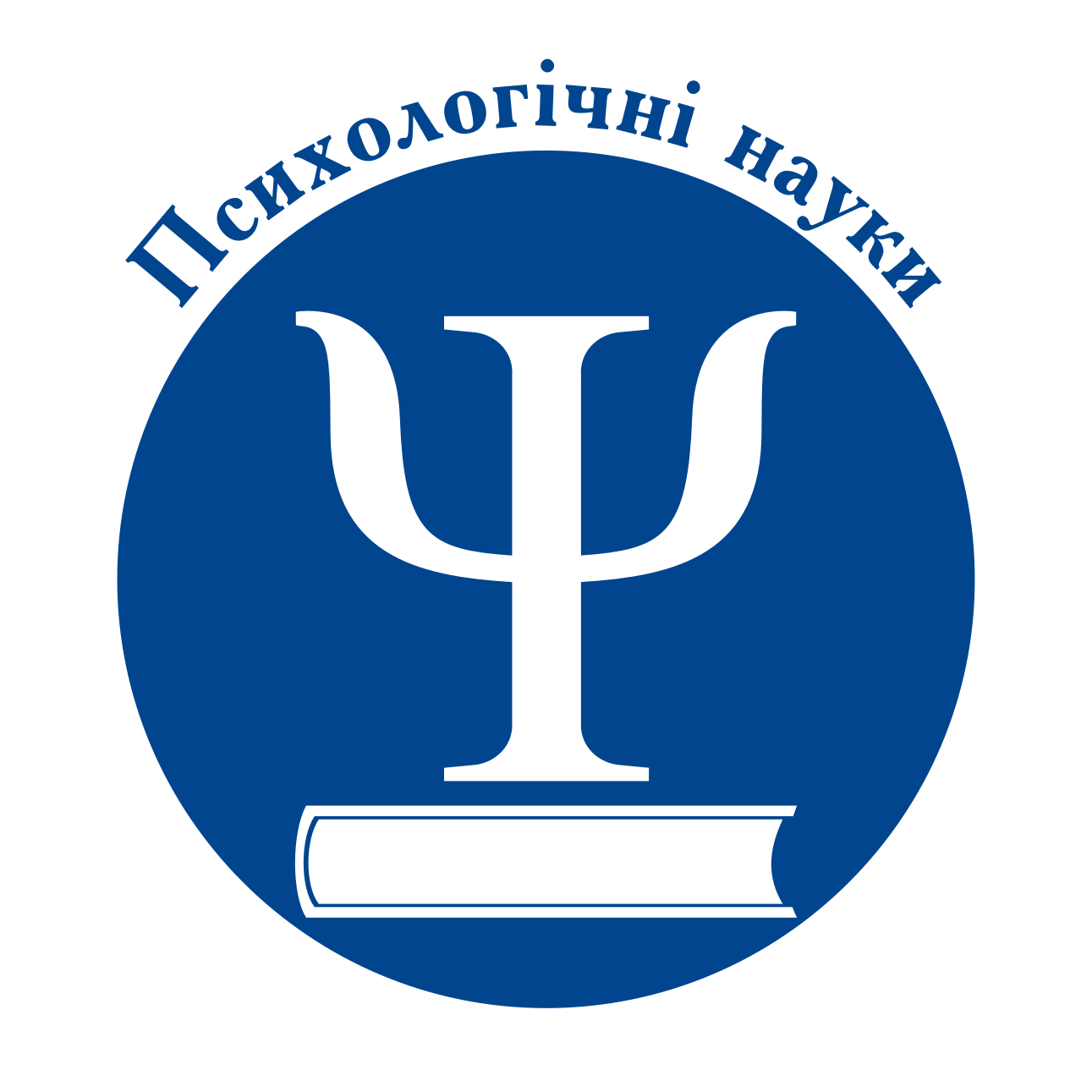RESEARCH ON THE PSYCHOLOGICAL STATE OF MILITARY SERVANTS IN NEED OF REHABILITATION
Abstract
Purpose. The purpose of the article is to recognize the features of the psychological state of military personnel in need of rehabilitation (using the example of diagnostics of three shifts of psychological rehabilitation of military personnel of the Armed Forces of Ukraine). Methods. The study used the method of systematization necessary to establish the approaches of scientists to the diagnosis of the psychological state of military personnel in need of rehabilitation. Also, to evaluate the results of the study identified during the use of the methods, factor, correlation and cluster analysis were used. Results. The methodological support for the diagnosis of the psychological state of military personnel in need of rehabilitation was determined, which takes into account the main criteria of mental health established by the WHO. Guided by the diagnostic tools, a screening of the psychological state of military personnel in three shifts was carried out. It was determined that the indicator of general emotional distress is a dominant factor that provides a combination of sleep disorders, anxiety and depressive symptoms. Such a structural component as a post-traumatic component (dissociation and PTSD) is considered as a specific feature that may require separate approaches in therapy. It is noted that the age variable does not have a significant effect on the severity of psychopathological manifestations, but the component of the duration of stay in the combat zone shows only a moderate correlation with affective- anxiety symptoms. It is noted that factor analysis showed two latent structures: a general specific post-traumatic factor and a factor of emotional distress, which indicates a high level of comorbidity of psychopathological manifestations. Cluster analysis showed that at the level of insomnia, GAD-7 and PHQ-9 variables one subcluster is formed, and in the hedgehogs of dissociation and PTSD and – another subcluster is determined.This is generally consistent with the data obtained at the level of factor analysis. The variables of duration of stay in the combat zone and age are not key for the formation of psychopathological symptoms, but the first component has a moderate effect on the state of affective-anxiety symptoms. The presented results of the complex of correlation, cluster and factor analysis determined the exhaustive characteristics of the state of psychopathological symptoms in the studied military personnel. Conclusions. According to the study data, a conclusion was made about the need to form and apply a comprehensive approach to the diagnosis and therapy of military personnel who have pronounced symptoms of depression, anxiety and post-traumatic stress.
References
2. Попик Ю. Психологічна стійкість військовослужбовців при виконанні бойових завдань. Psychology Travelogs. 2023. № 4. P. 121-129. https://doi.org/10.31891/PT-2023-4-13
3. П’янківська Л.В., Давидова О.В. Психотехнології багатомірного скринінгу особистості працівника поліції для виявлення негативних впливів екстремальних та кризових ситуацій. Наукові перспективи. 2024. № 10 (52). https://doi.org/10.52058/2708-7530-2024-10(52)-1210-1222
4. Стасюк В. В., Дикун В. Г., Кириченко А. В. Експертна методика оцінювання морально-психологічного стану особового складу. Психологія та соціальна робота. 2023. Вип. 2(58). С. 50-61.
5. Abraham V. D. Psychological States and Mental Health Stigma as Predictors of Help-Seeking Attitude among Selected Combat Military Personnel: Basis for a Mental Wellness Intervention Program. Journal of Interdisciplinary Perspective. 2025. Vol. 3(5). Р. 108-120. https://doi.org/10.69569/jip.2025.122
6. Ahmadi Aazi, Ponder Warren, Carbajal Jose, Schuman Donna, Whitworth James, Yockey R Andrew, Galusha Jeanine. Validation of the PCL-5, PHQ-9, and GAD-7 in a Sample of Veterans. Faculty Publications. 2023. Vol. 65. No. 8. URL: chrome-https://scholarworks.sfasu.edu/cgi/viewcontent.cgi?params=/context/socialwork_facultypubs/article/1030/&path_info=23._Validation_of_the_PCL_5__PHQ_9__and_GAD_7_in_a.4_2.pdf
7. Groll D. L., Ricciardelli R., Carleton R. N., Anderson G., & Cramm H. A Cross-Sectional Study of the Relationship between Previous Military Experience and Mental Health Disorders in Currently Serving Public Safety Personnel in Canada. Canadian journal of psychiatry. Revue canadienne de psychiatrie. 2020. Vol. 65(5). P. 330–337. https://doi.org/10.1177/0706743719895341
8. Jing K., Feng Z., Xu J. et al. The mental health of Chinese military personnel: a cross-sectional epidemiological study. BMC Public Health. 2024. Vol. 24. Iss. 3525. https://doi.org/10.1186/s12889-024-20969-w
9. Kim S., Lee K. Screening for Depression in Mobile Devices Using Patient Health Questionnaire-9 (PHQ-9) Data: A Diagnostic Meta-Analysis via Machine Learning Methods. Neuropsychiatr Dis Treat. 2021. Vol. 17. P. 3415-3430. https://doi.org/10.2147/NDT.S339412
10. Macdonald-Gagnon G., Stefanovics E.A., Potenza M.N., Pietrzak R.H. Generalized anxiety and mild anxiety symptoms in U.S. military veterans: Prevalence, characteristics, and functioning. Journal of Psychiatric Research. 2024. Vol. 171. P. 263-270. https://doi.org/10.1016/j.jpsychires.2024.02.013.
11. Sapra A, Bhandari P, Sharma S, et al. Using Generalized Anxiety Disorder-2 (GAD-2) and GAD-7 in a Primary Care Setting. Cureus. 2020. Vol. 12(5): e8224. doi:10.7759/cureus.8224
12. Taillieu T. L., Afifi T. O., Turner S., Cheung K., Fortier J., Zamorski M., & Sareen J. Risk Factors, Clinical Presentations, and Functional Impairments for Generalized Anxiety Disorder in Military Personnel and the General Population in Canada. Canadian journal of psychiatry. Revue canadienne de psychiatrie. 2018. Vol. 63(9). Р. 610–619. https://doi.org/10.1177/0706743717752878
13. Valladares-Garrido M. J., Picón-Reátegui C. K., Zila-Velasque J. P., Grados-Espinoza P., Vera-Ponce V. J., Pereira- Victorio C. J., Valladares-Garrido D., & Failoc-Rojas V. E. Depression and anxiety in peruvian military personnel during the pandemic context: a cross-sectional study. BMC Public Health. 2023. Vol. 23(1). Article 691. https://doi.org/10.1186/ s12889-023-15612-z
14. World Health Organization. Mental Health. 2025. URL: https://www.who.int/health-topics/mental-health#tab=tab_1 (дата звернення: 28.06.2025).

This work is licensed under a Creative Commons Attribution 4.0 International License.



